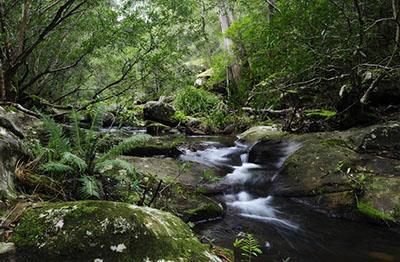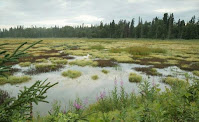Author Name
Douglas Marowa
(Amrita School for Sustainable Development, Amritapuri, Amrita Vishwa Vidyapeetham, India)
Journal Name
Journal of Biodiversity and Environmental Sciences | JBES
Publisher Name
International Network For Natural Sciences | INNSpub
Abstract
Forest and wetlands are fragile communities, when human activities precede uncontrolled their roles are lost. Objective was to investigate the role of forest and wetlands as water catchment areas in Zimbabwe. Christmas Pass forest woodland and wetland in Mutare was the study site. Sample of 196 people, selected through stratified random sampling and simple random sampling, then purposive sampling for 20 key informants. In-depth interview, key informant interviews, focus group discussion, and observation was conducted. Study revealed that both forest and wetlands are important in the hydrological cycle. Noted that there are several adverse impacts brought by anthropogenic activities. Observed that water was an essential factor in sustainable forest management, and forests are crucial for regulating the water cycle. Forest woodlands and wetlands are under a huge threat for extinction, as anthropogenic activities continue to impact negatively on these areas. Forest woodlands and wetlands are a major water catchment area and there is need for catchment basin management plan for as to rejuvenate the river flow downstream. Recommended the need for best management practices (BMPs) as they are proactive and often voluntary practical methods or practices used during forest management to achieve goals related to water quality, silviculture, wildlife and biodiversity, aesthetics, and/or recreation. Noted that the sustainable management of the forest woodlands requires participatory approach of all stakeholders through capacity building and empowerment. Above all, there was need for the catchment basin to balance its role of provision of human needs and the ecosystem services.
 |
| Unsustainable land management practices in Christmas Pass woodland – deforestation. |
Introduction
The deforestation involves conversion of forest land
to agriculture land, or residential resettlement. Worldwide the most
concentrated deforestation occurs in tropical rainforests. About 31% of Earth's
land surface is covered by forests. Between 15 million to 18 million hectares
of forest, an area the size of Belgium, are destroyed every year, on average
2,400 trees are cut down each minute (IUFRO, 2007). FAO (2013) indicated that
only 4 billion hectares of forest are left. The world has lost one-third of its
forest, an area twice the size of the United States. This is despite the fact
that forest and wetland are major catchment area for water, which need to be
used by the human beings.
 |
| Deforestation in the Christmas Pass woodland in Mutare. |
The above degradation of the wetland and forest has significantly affected the hydrological cycle. FAO (2013) suggested that water is a scarce commodity as it availability, accessibility, adequate and safety heavily depends on climate conditions, weather and sustainable management of the water catchment basins. The first and key step in providing safe water is the selection of the best available sources of water. The best sources of safe water is found in well protected catchment area that includes forest woodlands and wetlands.
In general ground water is better protected water that the surface water, the ground water is usually found in the forest or wetlands as springs (Bonan, 2008).Catchment protection is the second step in providing safe water and where, for whatever reason, source choice is limited it presents a key opportunity to minimise pathogen contamination. A catchment is an area where water is collected by the natural landscape. Imagine cupping a person’s hands in a downpour of rain and collecting water in them (FAO, 2013). The forest woodlands and wetlands are a very important water catchment basin. In most parts of Zimbabwe, it is being evident that the management of water catchment basin depends largely on the institutional setting as well as policy orientation of different communities.
 |
| Forest woodlands as water catchment areas and biodiversity habitat. |
Naturally, human beings, animals, birds and forests depend largely on each other and without proper management systems human beings will overrule the natural communities. This naturally creates tension between natural resources, including woodlands, wetlands, animals and birds since the demand and the need for these natural resources will increase (FAO, 2013).
This has led to degradation of the forest woodlands and the wetlands. Wetlands and forest woodlands are fragile communities and when human activities precede uncontrolled, function and roles of the wetland and forest woodland as a water catchment source and species richness will be lost. According to Bredemeier (2002), anthropogenic activities affect the health of our water catchments this is through deforestation of the forest woodlands, and settlement and farming in the wetlands just to mention a few. Humans often equate forest and wetlands with wasteland, a place to be drained, filled in, burnt off and re-purposed.
 |
| Settlement in the wetland and drying up of forest woodlands |
In fact, FAO (2013) studies show that 64% of the world’s wetlands have disappeared since 1900. Measured against 1700, an estimated 87% have been lost. There has been serious deforestation, clearance, clearcutting, or clearing is the removal of a forest or stand of trees the Christmas Pass forest woodland and wetland that is then converted to non-forest use.
Related Articles Ethnobotany of Oyster nut (Telfairia pedata) in Northern Tanzania | Research Paper By JBES
 |
| Sustainable managed forest woodlands provide protection to water catchment basin. |
Water has become a scarce commodity in the study area as the water catchment areas are drying up. FAO (2013) indicated that the forest woodlands and wetlands are being cleared for the purpose of timber harvesting, resettlement and farming. Therefore the study area is not spared, this has led to woodlands and wetlands around the study area losing their original status of being a water catchment basin, loss of flora and fauna species used to be seen in the forest and wetland area as there is no water to drinking.
The rivers network are dried up and no water is flowing downstream. This then means that Zimbabwe has not been spared, from the adverse impacts of land degradation desertification, and drought. FAO (2013) indicated that it is estimated that 10% of land’ soils are under high risk of erosion due to the nature of soils, which are sodic. The soils break into fine particles and tunnel subsequently collapsing and forming gullies (FAO, 2013). Some of the reason for land degradation especially taking the form of desertification, deforestation, overgrazing, salinization, or soil erosion, land degradation can be caused by unsustainable land management practices, such as deforestation, soil nutrient mining and biophysical factors, such as the natural topography of an area or its rainfall, wind, and temperature.
 |
| Wetland settlement at the downstream of Christmas Pass woodland in Muatre. |
The main objective was to investigate the role of
forest and wetlands as water catchment areas in Zimbabwe. This was done to
recommend the sustainable management of forest woodland and wetlands so that
the communities would built climate change resilience as they full utilise the
function of the forest and wetland as a source where water is collected. The
study recommended sustainable water catchment management strategies as climate
adaptation and mitigation measures in the communities. Check out more by following the link Sustainable natural resources management and utilization: Role of forest woodlands and wetlands for sustainable community livelihood and development
Reference
Bonan GB. 2008. Forests and climate change: Forcings, feedbacks, and the climate benefits of forests. Science 320, 1444-1449.
Bredemeier Michael. 2002. Anthropogenic Effects on Forest Ecosystems at Various Spatio-Temporal Scales. The Scientific World Journal (2002) 2, 827.84; DOI: 10.1100/tsw.2002.129. Forest Ecosystems Research Centre, University of Goettingen, Germany
FAO. 2013. Forests and water – International momentum and action. FAO, Rome.
IUFRO. 2007. International workshop on water management through forest management. Beijing, 2007. Conference proceedings.
McGuire AD, Sitch S, Clein JS. 2001. Carbon balance of the terrestrial biosphere in the twentieth century: analyses of CO2, climate and land use effects with four process-based ecosystem models. Glob. Biogeochem. Cycl 15(1), 183.206.
Verdonschot PF. 2000. Integrated ecological assessment methods as a basis for sustainable catchment management. Hydrobiologia 422, 389-412.
William J Kleindl, Paul C Stoy, Michael W Binford, Ankur R Desai, Michael C Dietze, Courtney A Schultz, Gregory Starr, Christina L Staudhammer and David JA Wood. 2018. Toward a Social-Ecological Theory of Forest Macrosystems for Improved Ecosystem Management. Forests 2018 9, 200; DOI: 103390/f9040200

















0 comments:
Post a Comment